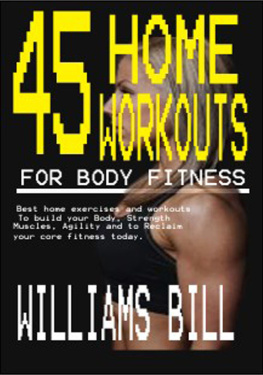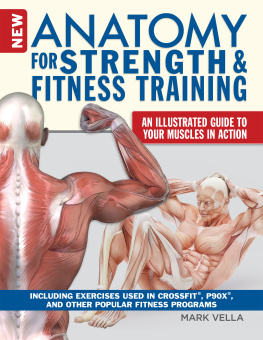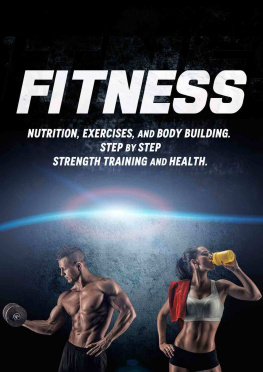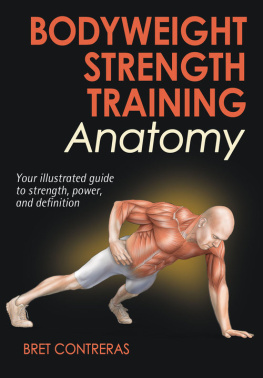General DisclaimerThe contents of this book are intended to provide useful information to the general public. All materials, including texts, graphics, and images, are for informational purposes only and are not a substitute for medical diagnosis, advice, or treatment for specific medical conditions. All readers should seek expert medical care and consult their own physicians before commencing any exercise program or for any general or specific health issues. The author and publishers do not recommend or endorse specific treatments, procedures, advice, or other information found in this book and specifically disclaim all responsibility for any and all liability, loss, or risk, personal or otherwise, which is incurred as a consequence, directly or indirectly, of the use or application of any of the material in this publication. | Thunder Bay Press An imprint of the Baker & Taylor Publishing Group 10350 Barnes Canyon Road, San Diego, CA 92121 www.thunderbaybooks.com |
Copyright 2010 by Moseley Road Inc.Copyright under International, Pan American, and Universal Copyright Conventions. All rights reserved. No part of this book may be reproduced or transmitted in any form or by any means, electronic or mechanical, including photocopying, recording, or by any information storage-and-retrieval system, without written permission from the copyright holder.
Brief passages (not to exceed 1,000 words) may be quoted for reviews.Thunder Bay is a registered trademark of Baker & Taylor. All rights reserved.All notations of errors or omissions should be addressed to Thunder Bay Press, Editorial Department, at the above address. All other correspondence (author inquiries, permissions) concerning the content of this book should be addressed to Moseley Road, Inc., 123 Main Street, Irvington, NY 10533.
www.moseleyroad.com.ISBN: 978-1-60710-504-6 (ebook)
An Insiders Guide to Building a Strong Core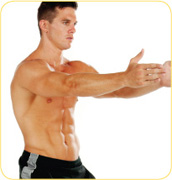 Dr. Abigail Ellsworth
Dr. Abigail Ellsworth San Diego, California
San Diego, CaliforniaCONTENTS
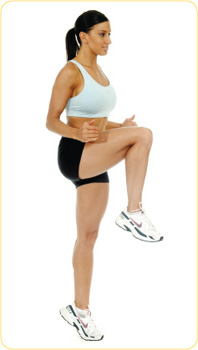
 I f youve ever taken a fitness class, youve probably heard trainers talking about the core muscles of the body. But where are these muscles? What do they do?The core muscles are the deep muscle layers that lie close to the spine and provide structural support for the entire body. They provide internal pressure to allow intense pushing (such as that during childbirth) or to expel substances (such as vomit, feces, or carbon-laden air).
I f youve ever taken a fitness class, youve probably heard trainers talking about the core muscles of the body. But where are these muscles? What do they do?The core muscles are the deep muscle layers that lie close to the spine and provide structural support for the entire body. They provide internal pressure to allow intense pushing (such as that during childbirth) or to expel substances (such as vomit, feces, or carbon-laden air).
These core muscles are divided into two groups: major core and minor core muscles. The major muscles of the core reside on the trunk and include the belly area and the mid and lower back. This area encompasses the pelvic floor muscles (levator ani, pubococcygeus, iliococcygeus, puborectalis and coccygeus), the abdominals (rectus abdominis, transversus abdominis, obliquus externus, and obliquus internus), the spinal extensors (multifidus spinae, erector spinae, splenius, longissimus thoracis, and semispinalis) and the diaphragm. The minor core muscles include the latissimus dorsi, gluteus maximus, and trapezius (upper, middle, and lower). These minor core muscles assist the major muscles when the body engages in activities or movements that require added stability.Why is the core so important? Because the functional everyday movements of the body are highly dependent on the core. It stabilizes the trunk and pelvis, allowing the arms and legs to move properly with activity.
Lack of core development can result in a predisposition to injury. Heres an analogy: Think about walking on a beach. When you first step on the beach, the sand is loose and deep, and youll find it really hard to move and walk in. You need to expend a lot of energy and effort. As you progress down toward the water, youll notice that the sand is now firmer and packed down, making your movement easier and more efficient. Lack of core stability is like trying to walk or run on the top of the beach, where the sand is loose and difficult to move in.
While trying to navigate through it, you can easily injure yourself, twisting your ankle, for example. But having a strong core is like walking over firm sandits far easier for you to get where you want to go. A strong core makes it easier to move with any activity.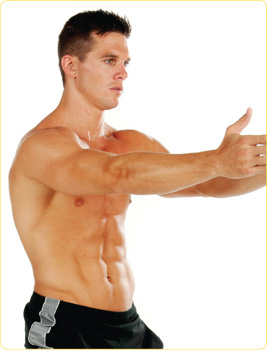 The way a body moves and the muscles needed to do so is called biomechanics. The forces applied to the body from the world are what determine how those mechanics are going to be used. The word force has many different meanings, but here we are going to generally define force as the energy transfer required to travel throughout the body during activity. So if you are running, you exert a strong force on your feet, knees, and hips.
The way a body moves and the muscles needed to do so is called biomechanics. The forces applied to the body from the world are what determine how those mechanics are going to be used. The word force has many different meanings, but here we are going to generally define force as the energy transfer required to travel throughout the body during activity. So if you are running, you exert a strong force on your feet, knees, and hips.
The strength of the force decreases the farther away the point of contact is.In addition to dynamic core function, there is static core functionality. This is the ability of your core to align the bones of your skeleton to resist a force that does not change. What does this mean to you? The static core is what greatly influences your posture. The human body is anatomically designed to take a force (such as that exerted when you sit, walk, run, or jump) and transfer this force through various joints in a desired direction. If your posture and core strength are compromised, then this force cannot be transferred properly, which can lead to injury. Static core strength is one of the hardest forms of core stability to train for and is often overlooked due to the lack of motion.
Have you ever noticed how tired you feel after a day of standing at a museum, gazing at art, or standing on the sidelines watching a game? These activities require static core stability, even though you do not feel like you are exerting yourself.Keeping the core muscles balanced, allowing for equal development and use of the muscles to stabilize, strengthen, and align the body, is crucial to healthy living. It is not just the use of these core muscles, but how they are used that is important. The goal of this book is to teach you how to properly recruit, train, and strengthen these muscles to allow for optimal strength and movement.ANNOTATION KEYBlack indicates major core


